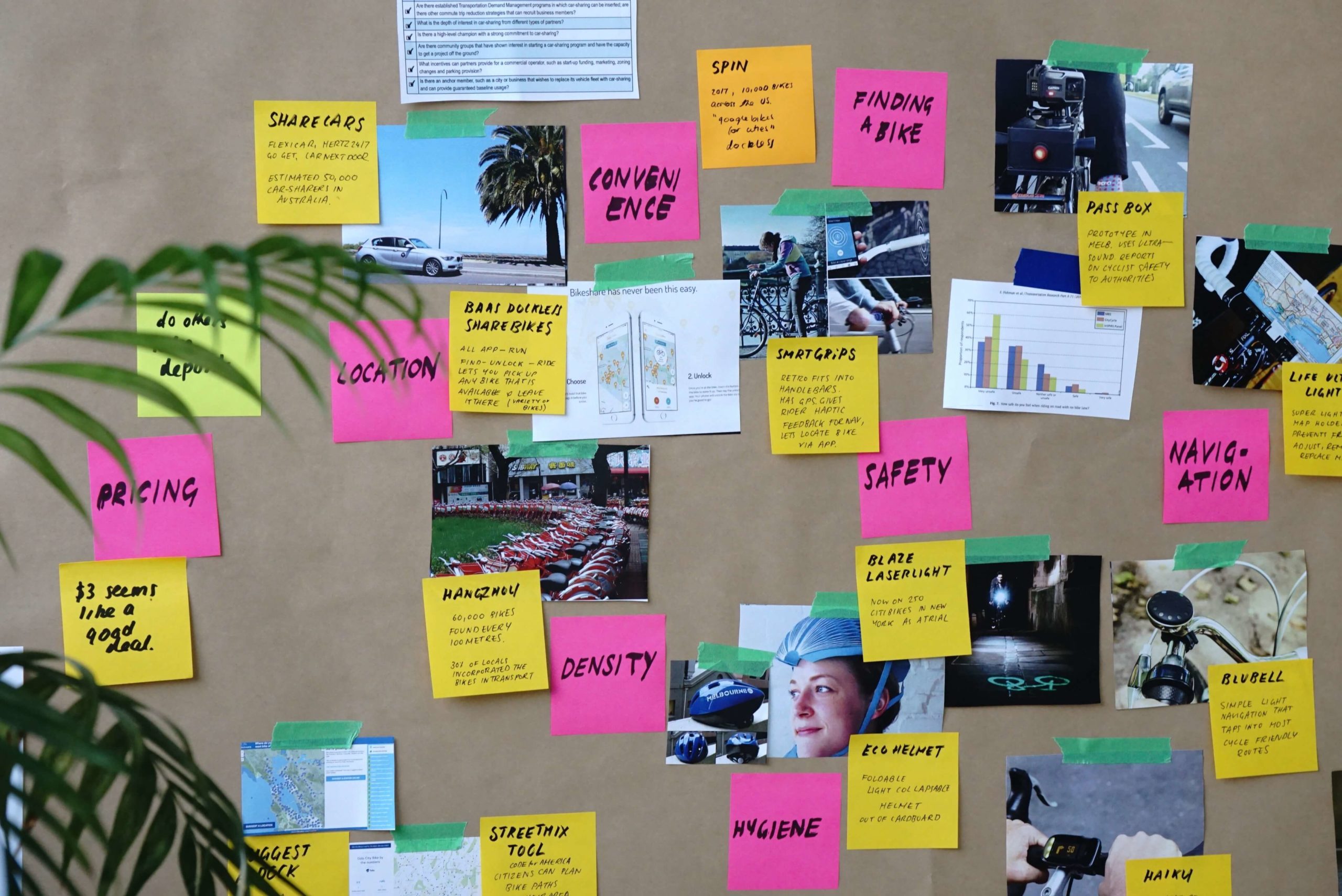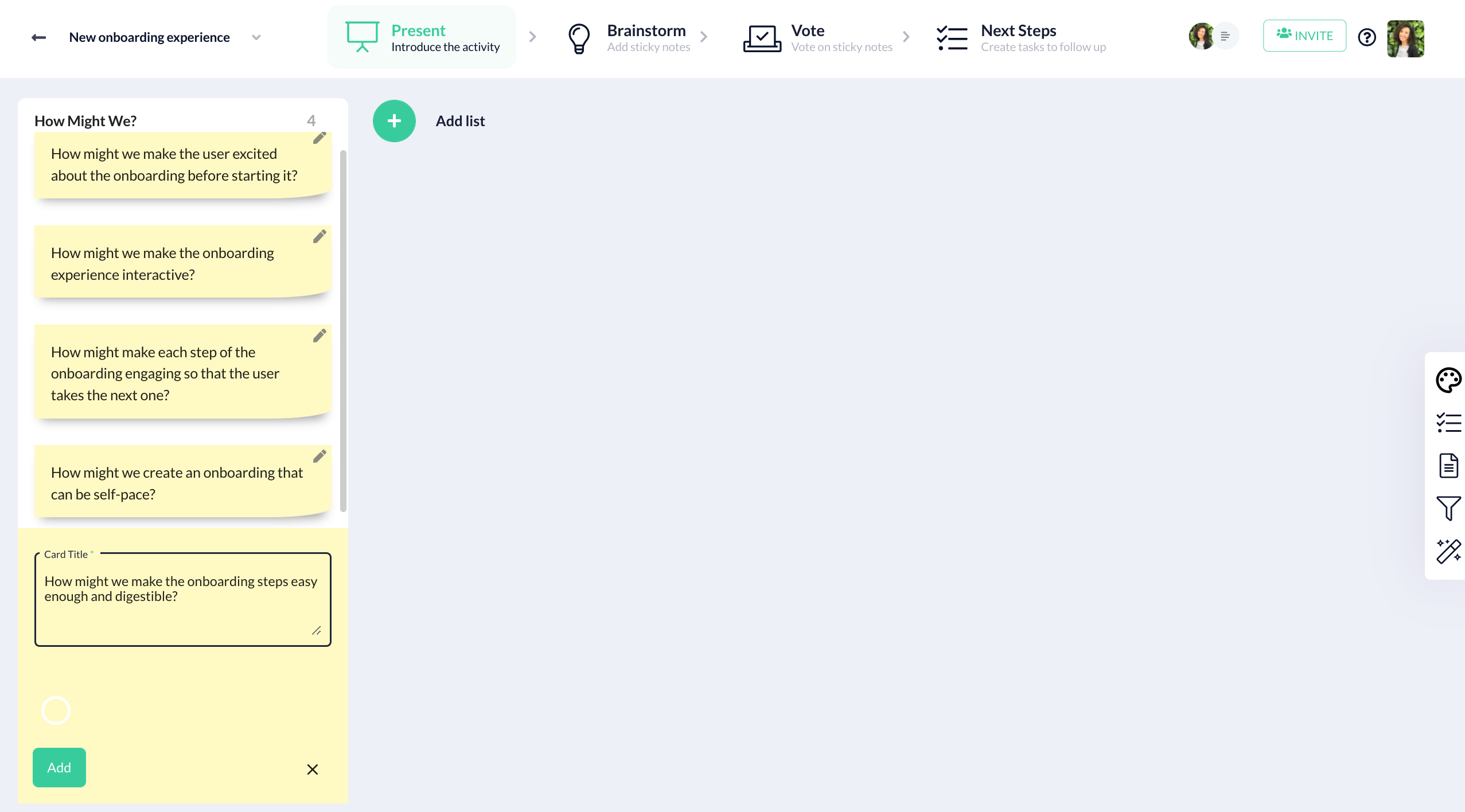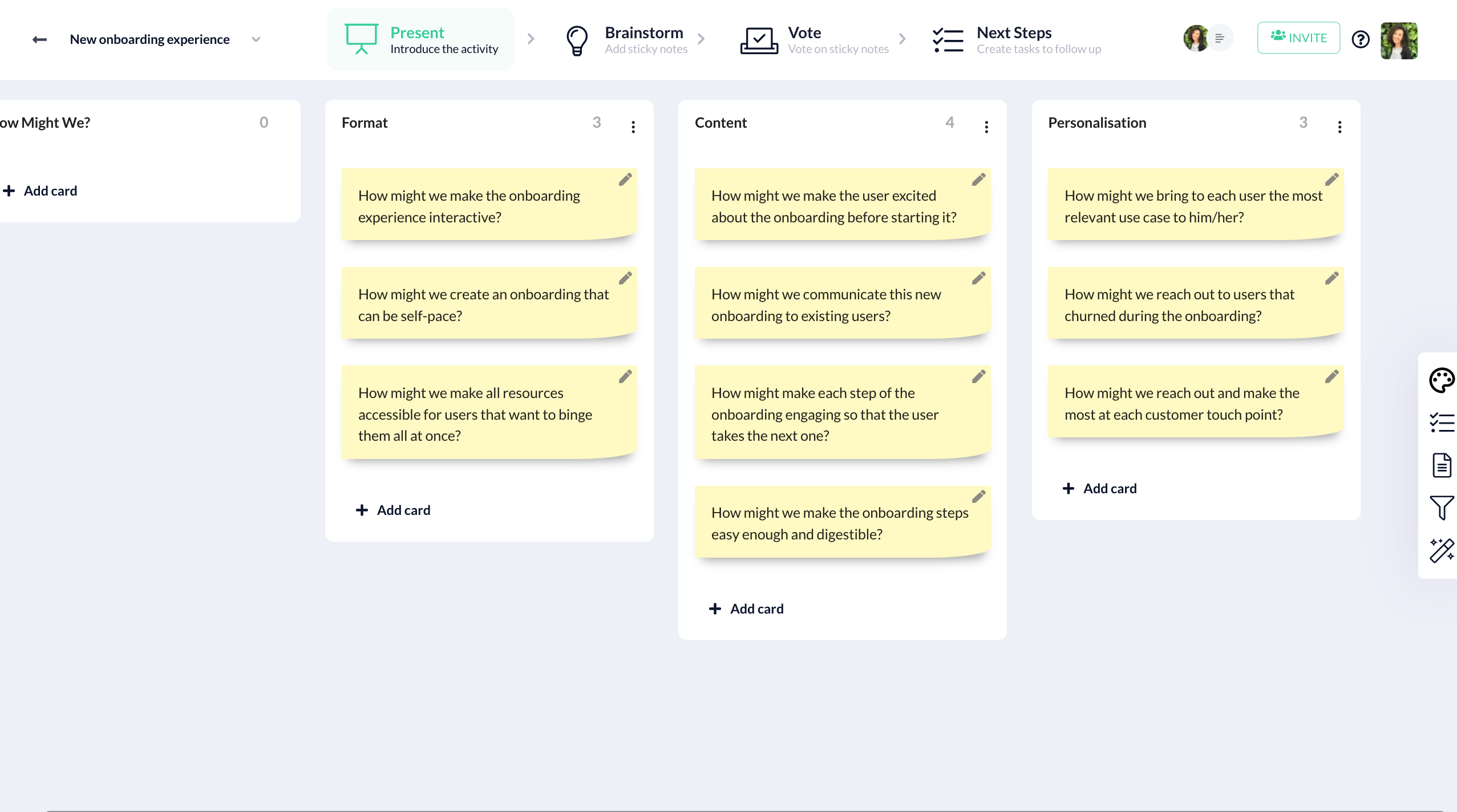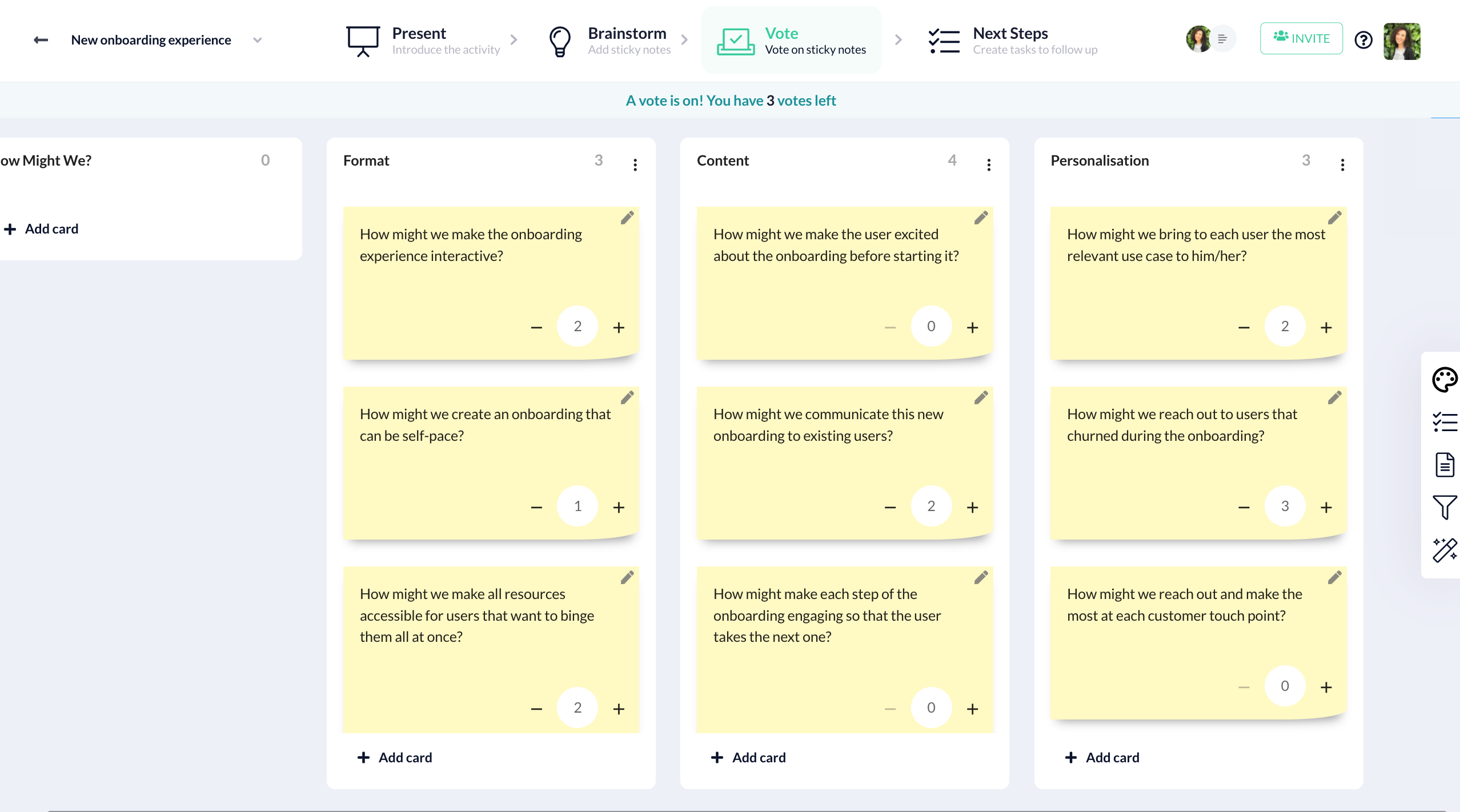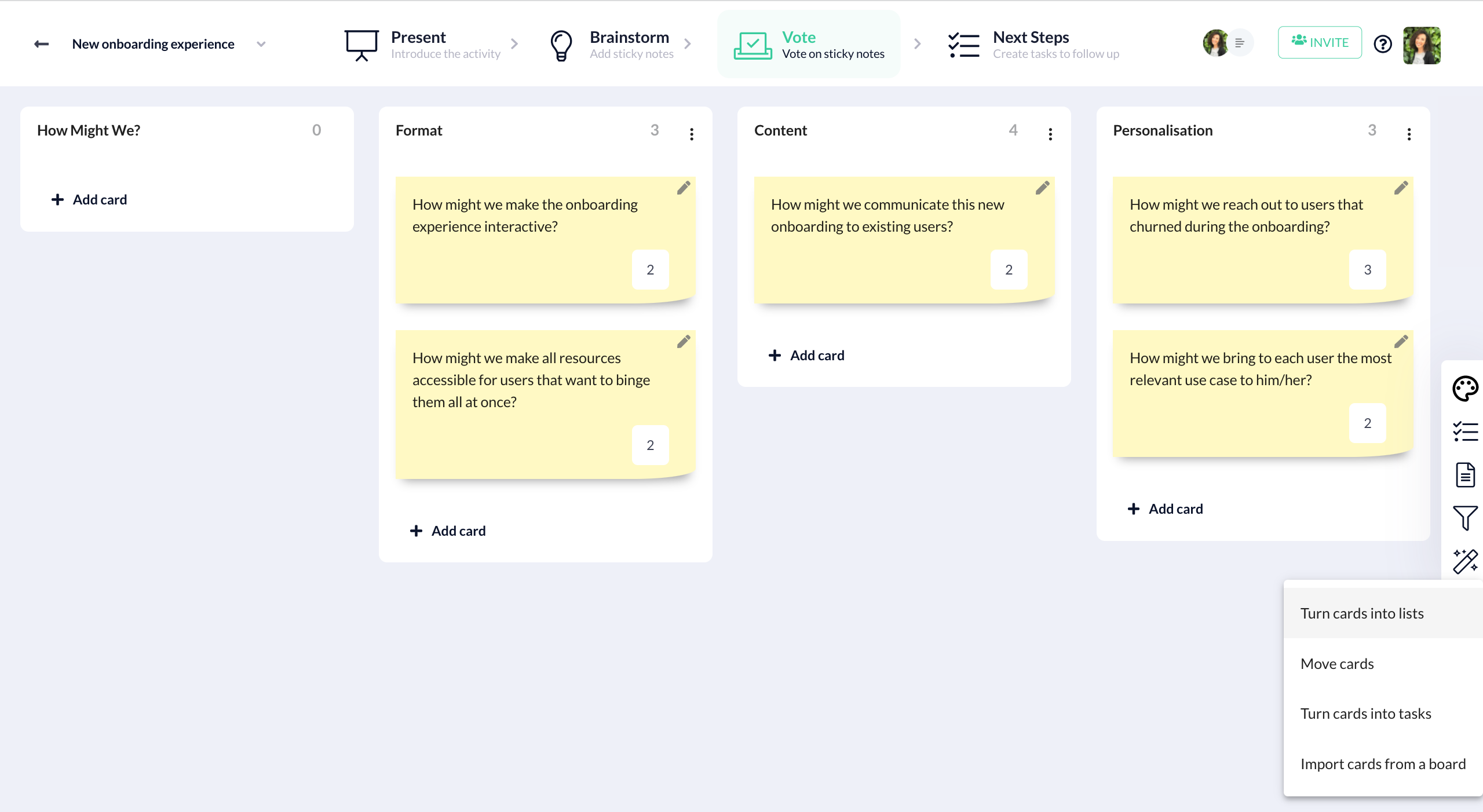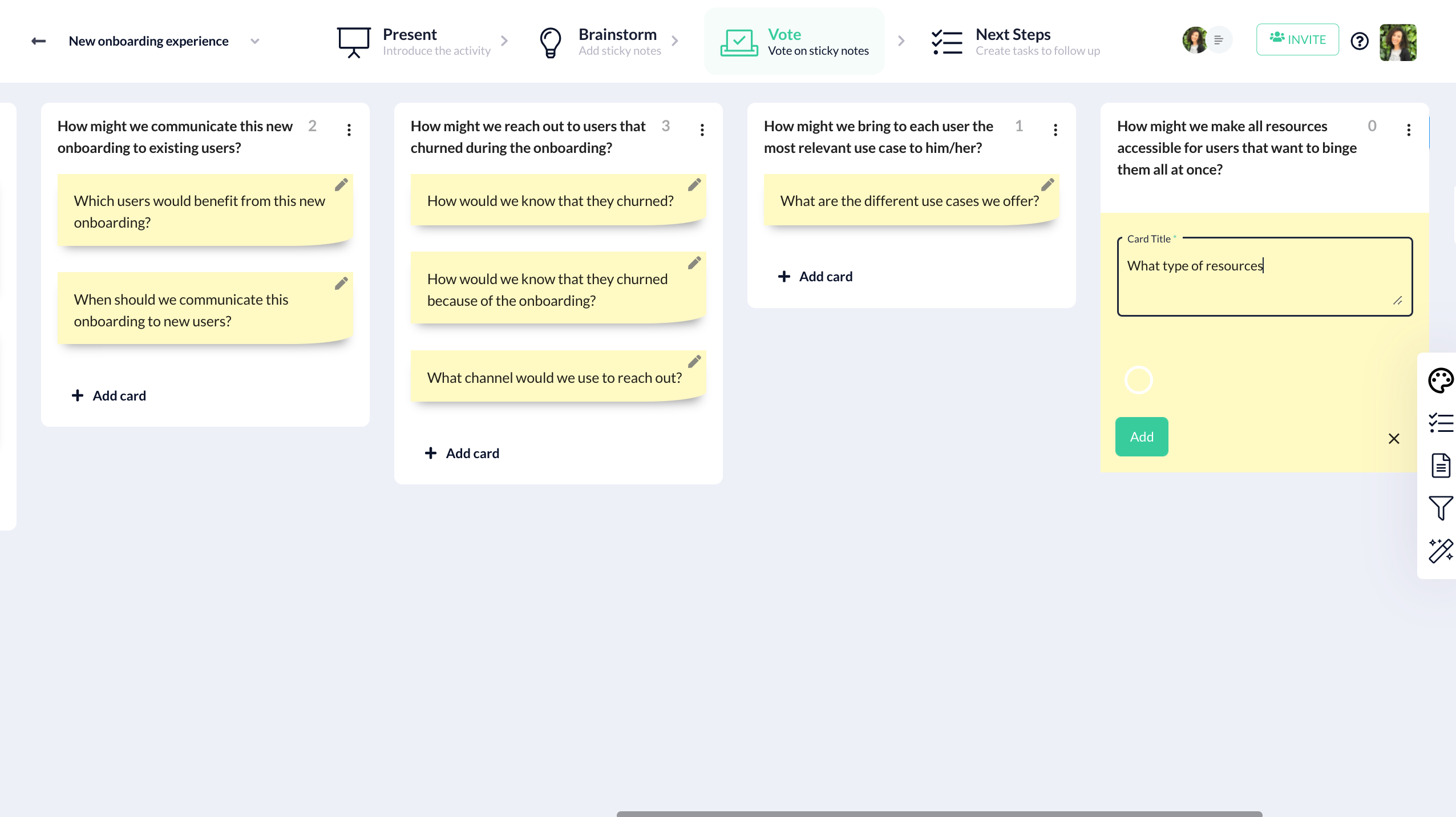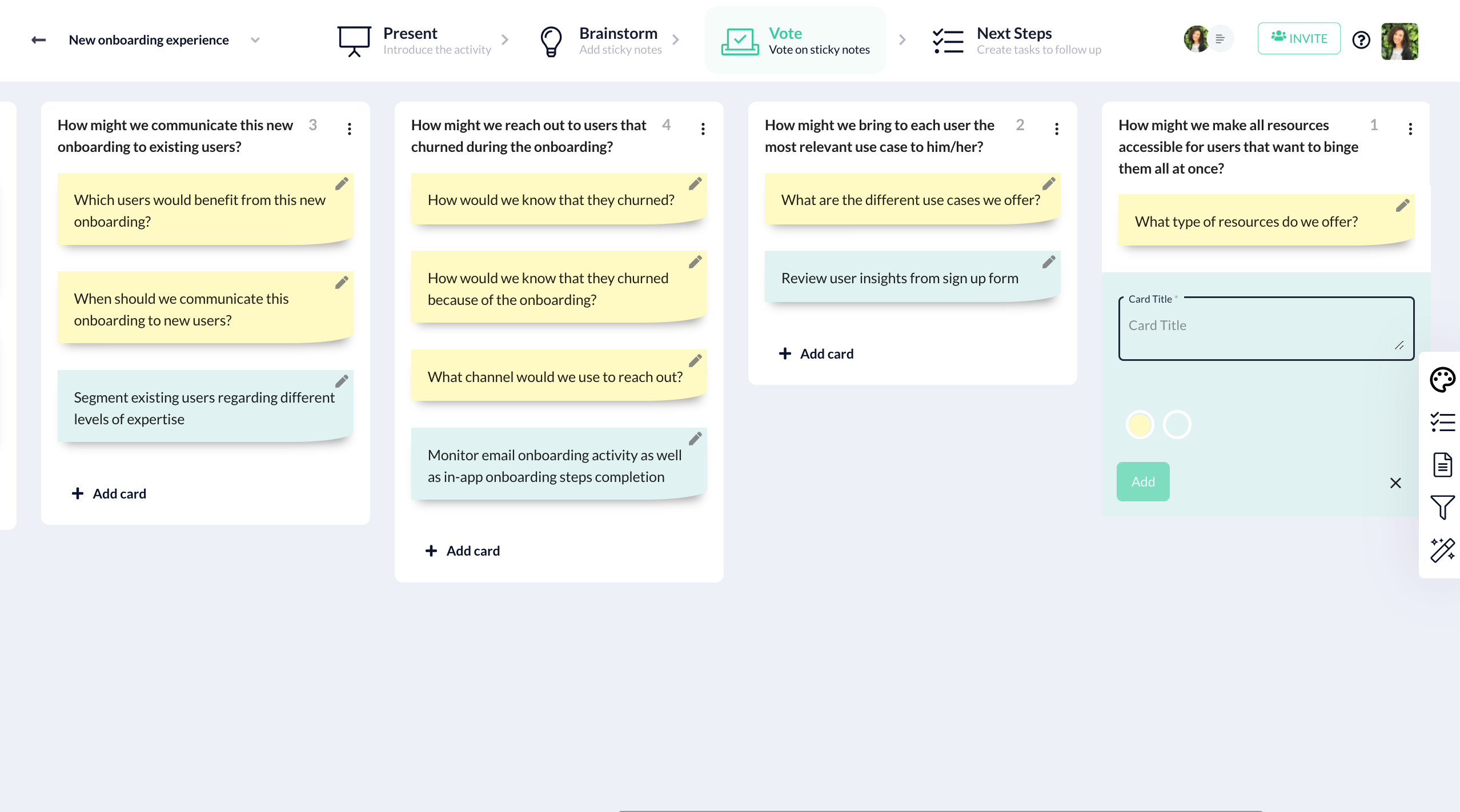As a marketing professional, it can be tough to generate ideas and bridge the gap between your team or client, and the potential customers.
Group brainstorming can often get stalled if there is no method used to generate ideas. The participants may get hung up on one idea in particular and be biased in their discussions. There might be some sort of competition that spirals from this kind of thinking, as people can be extremely competitive. If they feel their idea is the best one, it’s going to be hard to break them from that way of thinking.
Moreover, if the brainstorming session isn’t focused on a specific problem that you can solve for your user or customer, and is instead too broad in its approach, you will have a rough time getting people to truly consider all possibilities.
You want innovative ideas that will help your client reach more people to help solve the daily challenges in their lives.
Marketing meets UX
One method to solve this is a “How Might We” workshop.
If you have any knowledge of UX (user experience) design, you’ll know that to come up with the best ideas for your client, you have to think like the user or customer and step in their shoes.
What challenges does the user face? What solutions can you generate to improve their lives and meet their needs? Thinking along these lines helps you to consider the best ideas that will resonate with a potential customer.
In the user experience process, ideation often involves asking “How Might We” questions.
Instead of asking, “What’s the best marketing strategy we can have to increase the client’s profile and revenue?” you want to consider instead the customer’s point of view. And the “How Might We” questions help you just do that: frame the discussion around the customer.
For instance, you may ask “How Might We make customers feel that using our service is safe?” or “How Might We ensure more people understand the product’s benefits?“
Do you see the difference?
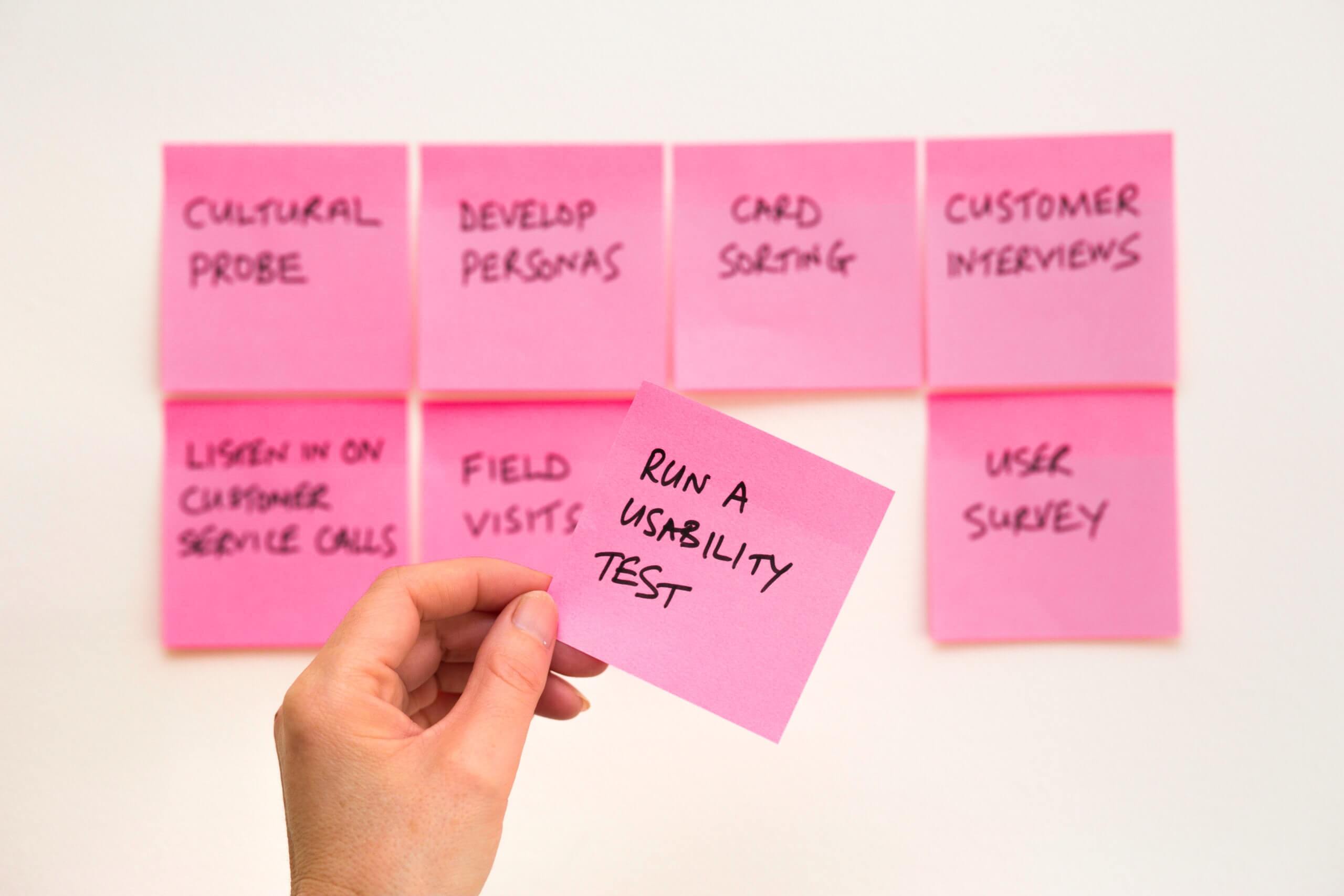
How to facilitate a “How Might We” workshop?
“How Might We” brainstorming sessions keep the participants’ minds open and the solutions ambiguous, so as to generate the most innovative and effective ideas possible.
Using the word “how” keeps the brainstorming explorative. “Might” helps the participants understand there are multiple possibilities and opportunities to achieve positive outcomes. “We” brings everyone together in the common goal of finding the best possible solutions.
As the facilitator of a “How Might We” brainstorming session, using the Excelway tool can help you generate the best ideas with efficiency.
1. State the problem you’re solving for your customer
Start the session by stating the problem your project or service addresses. If you sell organic fertilizer, you are solving the problem of genetically modified agriculture. If you sell earrings, the problem you are solving might be the desire of the buyer to have something nice to wear.
If you don’t have a problem statement, a business Point of View, or a guiding mission, you should probably consider running a Business Model Canvas workshop or a Lean Canvas workshop prior to the “How Might We” session.
2. Introduce the “How Might We” method to the participants
Explain what a “How Might We” statement is and what it can achieve for the brainstorming session. Include examples that illuminate the ways a “How Might We” question can generate ideas.You might also want to raise their awareness about how to write a good « How Might We » question.
When a question is too broad, it will produce too many ideas. And when too narrow, too few. If, for example, you ask the question, “How might we create a great onboarding experience?” for a new digital tool, the ideas generated will include everything from recruiting customers to engaging them in the use of the tool. If you instead say, “How might we create a helpful 30-page document to download?” that is too specific.
If you instead say, “How might we make an orientation experience for users that teaches them how to use the tool?” it will generate ideas that pertain to exactly one aspect of the onboarding process. This will produce specific ideas such as “Make an orientation video“, or “Create an online avatar to help guide them through the process.”
3. Brainstorm “How Might We” questions
Ask each participant to come up with their own “How Might We” questions for this particular product or service.
Using Excelway, have them input their questions on digital sticky notes, in the first list of a blank brainstorm activity. You can choose to keep their input anonymous, which is the default setting in the Excelway workshop module. You can even hide other participant’s cards during the brainstorm, to avoid bias and keep everyone focused. However, showing everyone’s cards during the brainstorm can help the team bounce ideas off and increase creativity and collaboration.
4. Identify Patterns
If the brainstorming session produced too many « How Might We » statements, you might identify patterns and want to group the statements into categories.
In our example of the onboarding experience, we grouped the statements into 3 categories: Format, Content and Personalisation. This way, we created three lists in the Excelway activity, and could review the statements without switching context.
5. Select the best “How Might We” questions
Ask the participants to vote on the questions that are key to solving the problem at hand. Determine the number of votes for each participants regarding the number of “How Might We’s” you want to analyze during the session. If you want to come up with three “How Might We” statements, then you probably should give each participant three votes.
Use the filter feature to focus on the questions with the most votes. To dive into each How Might We question, turn those selected into lists using the feature Turn cards into lists.
6. Expand with follow-up questions
The main goal of the “How Might We” workshop is to spark creativity to find solutions to customer’s problems. At this stage of the session, you have identified the problems as well as the opportunities for solutions. Before diving into specific solutions, you might consider adding some follow-up questions to each “How Might We” statement selected.
These follow-up questions don’t have to be framed as How Might We’s, but rather as regular questions.
For instance, to expand on the statement « How might we communicate this new onboarding to existing users? », we found the following questions very helpful in making the solution specific:
- Which users would benefit most from this new onboarding?
- When would be the best timing to communicate this onboarding to existing users?
7. Brainstorm ideas and solutions
Finally comes the time for brainstorming solutions! With the How Might We framework presented above, you ensure that the group will be answering the right questions so as to find effective solutions.
Using Excelway’s sticky note feature, run another brainstorming session, and ask each of the participants to offer solutions to the “How Might We” questions. You might want to select a different sticky note colour for this brainstorm, as to differentiate the solutions to the follow-up questions.
Your team will now have a plethora of ideas to review and refine. Selecting the ones with the least effort for the most impact will help your team solve user problems and improve the client’s success with customers.
Our favorite resources on the topic :
Define and Frame Your Design Challenge by Creating Your Point Of View and Ask “How Might We”
Using “How Might We” Questions to Ideate on the Right Problems
